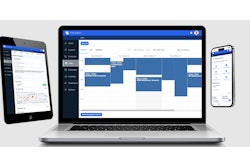
The field service industry has seen vast changes over the last few years, with the pandemic forcing companies to start thinking differently and make adjustments in their processes. Pre-pandemic, and still today, many businesses in the field service industry were being managed using pen and paper, operating under the conditions and guidelines that had been commonplace in the field service industry for decades. Whether a small, independent business or a large, growing enterprise, the majority of field service businesses were continuing to use the same software or day-to-day processes that they’ve used for years. While there are still many companies using pen and paper, today the industry looks very different.
The biggest change that the service industry has experienced in recent years was the transition to a more digitized way of operating. This was a result of these location-based essential businesses needing a way to run their businesses in a contactless and remote way, and the need to engage with customers through digital tools like portals, SMS, emails, etc. No matter the size, service businesses like pest control, lawn care, landscaping, HVAC, or cleaning, were critical to keeping homes and businesses clean, healthy and safe during the pandemic. Suddenly their priorities weren’t just to complete services, but how to do them efficiently, safely and with a promise of future services. Today, this has become the norm, and companies are expected to keep up with these consumer demands through things like contactless pay, customer portals, online scheduling, ETAs and more.
It quickly became evident that the most consistent and streamlined way for businesses to thrive was to make sure they were working with the correct software and given the best tools to set themselves up for success. As demand for field services grew, business owners learned to harness software to help them grow their businesses, service their customers and maximize their money.
The right software has the ability to impact every aspect of a business cycle - from gathering leads to executing services to collecting payment - thereby reducing the risk of human error and saving time that was wasted using manual pen and paper processes. Field service software helps to automate scheduling and even create technician routes via GPS and route optimization features. As demand went up, updated software enabled them to dispatch and schedule workers more efficiently during this time. This area of field service software is accountable for an estimated 24.7% of total industry revenue in 2021. With a streamlined schedule and delivery system in place, a decrease in employees becomes irrelevant as technicians are able to service more locations in a shorter period of time.
In addition to back-end software, which can be used by in-office administration as well as business owners and technicians, many field service software companies have increased their mobile application offerings to give in-the-field workers direct access to all software offerings, including real-time GPS updates, appointment cancellations and on-hand payment services. When a field technician has access to customer and business information right from their fingertips, it increases the opportunity to upsell and cross-sell services, growing recurring revenue and making for an exceptional customer experience. It also provides flexibility for technicians and business owners so they can self-manage hours and have access to training tools without going into the office.
Top software features and functionalities that help to drive business growth and efficiencies include:
1. User-friendly customer portals that allow customers and businesses to access their needs on-demand
2. Payment processing functionalities that accelerate cash flow, speed up payments and give customers easy ways to pay
3. Route optimization tools to facilitate greater route density and give customers reliable ETAs
4. Mobile apps for field technicians to have access to everything they need, all in one place
5. Integrated marketing capabilities to gather leads and get new customers
6. Scheduling tools for easy communication between customers, technicians and back office
7. Reporting and analytics to make more informed business decisions
The transformation of the field service industry has been revolutionary over the last three years and studies show the industry will continue to rise at a rapid pace. In 2021 alone, industry revenue increased almost 15% and is expected to continue to increase to an annualized 7.9% to $3.0 billion until 2026 according to a recent report from IBIS World.
While the pandemic might have accelerated these consumer demands, they are now here to stay and the only way for field service companies to keep up is to invest in the right software partner who will take them into their next stages of growth and success.


















